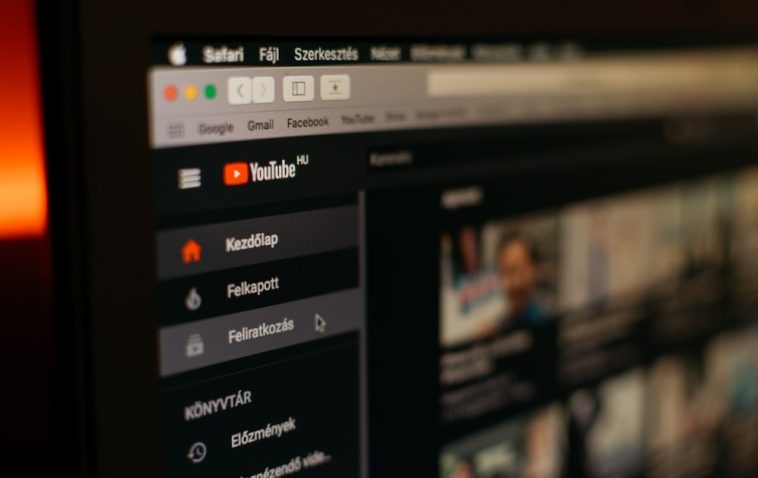Introduction.
Starting a podcast on YouTube might feel like an overwhelming process, but I’m here to break it down into simple steps.
YouTube has become a hotspot for podcasters for a reason. With billions of users and a format that supports both video and audio, it offers a unique chance to build and engage an audience.
In this guide, I’ll take you through everything from choosing your podcast topic to recording, editing, and publishing it on YouTube, plus some pros and cons, tips, and frequently asked questions.
Why Start a Podcast on YouTube?
YouTube is a massive platform that lets you share ideas, stories, and conversations with people worldwide.
While platforms like Spotify or Apple Podcasts are great for audio-only formats, YouTube has the edge if you want to show some personality through video or even use visual aids for your content.
You don’t need to be a pro with a big production budget, either—people care most about engaging content and decent sound quality, so if you’re willing to put in a bit of effort, it’s within reach.
How Do I Create a Podcasts On YouTube?
Let’s dive into the steps to bring your podcast to YouTube. It’s a process that anyone with a solid plan and a bit of tech-savvy can pull off, and I’ll take you through it step-by-step.
1. Define Your Podcast’s Purpose and Topic.
- Find Your Niche: What are you passionate about? What topics do you love discussing? It helps if the topic isn’t overly crowded, but it should also have an audience.
- Research Your Audience: Knowing who will be listening or watching is essential. Use YouTube’s search bar or Google Trends to see what people are talking about in your niche.
2. Plan Each Episode.
- Choose a Format: Do you want to go solo, have guest speakers, or have co-hosts? Decide how each episode will flow.
- Create a Script or Outline: It doesn’t have to be word-for-word, but having a structure keeps you on track and keeps the audience engaged.
3. Set Up Your Equipment.
- Microphone: Invest in a decent mic. Audio quality is more important than video quality for podcasts. USB mics like the Blue Yeti or Audio-Technica AT2020 are popular for beginners.
- Camera (Optional): If you want to show yourself while speaking, a basic webcam or even a smartphone camera will work. Later, you can invest in higher-quality cameras as your audience grows.
- Editing Software: You don’t need fancy software. Platforms like Audacity (for audio) and iMovie or DaVinci Resolve (for video) are free and easy to use.
4. Record Your Podcast.
- Find a Quiet Space: Minimize background noise as much as possible. If you’re recording video, ensure the lighting is good.
- Keep it Natural: It might feel awkward at first, but speaking naturally goes a long way. People respond well to authenticity.
5. Edit the Episode.
- Trim Mistakes: Cut out any long pauses, “ums,” or awkward parts. This will keep the flow smooth and help with viewer retention.
- Add Visuals (Optional): If you’re feeling creative, add visuals or graphics to your video podcast. These could be anything from infographics to related images or slides.
6. Upload to YouTube.
- Optimize Your Title and Description: Use keywords related to your topic so people can find your podcast. Tools like TubeBuddy or vidIQ can help with SEO on YouTube.
- Create an Engaging Thumbnail: Thumbnails can make or break a click-through rate. Keep it clean, clear, and eye-catching.
- Add Tags: Adding relevant tags will help YouTube’s algorithm understand your content and show it to people who may be interested.
7. Promote Your Podcast.
- Share on Social Media: Platforms like Twitter, Instagram, and even TikTok can drive viewers to your YouTube channel.
- Engage with Comments: Answering questions and engaging with your listeners builds community and encourages more interaction.
Pros and Cons of Podcasting on YouTube
Pros:
- Increased Visibility: YouTube is a search engine, so your content has a higher chance of being discovered.
- Versatility: You can record audio-only episodes or go with video for a more immersive experience.
- Monetization Opportunities: With YouTube’s Partner Program, there’s the potential to earn from ads once you meet the eligibility requirements (1,000 subscribers and 4,000 watch hours in the past year).
- Audience Engagement: The comments section provides a direct way to connect with listeners, which can improve loyalty and community.
Cons:
- Time-Consuming: Recording, editing, and uploading video can take longer than audio-only podcasts.
- Higher Equipment Costs: Although you can start with basic equipment, producing high-quality video content can require additional investment in lighting and cameras.
- Algorithm-Driven: Discoverability depends heavily on YouTube’s algorithm, so consistent posting and optimization are necessary for growth.
- Competitiveness: YouTube’s podcast space is crowded, so standing out takes dedication and unique content.
Frequently Asked Questions (FAQ)
Q1: Do I need to show my face on my YouTube podcast?
No, showing your face is optional. Many podcasters prefer audio-only with a static image or animated waveform. However, adding video can help with engagement.
Q2: How long should my YouTube podcast episodes be?
There’s no strict rule, but 20-60 minutes tends to work well. Keep in mind that audience attention spans on YouTube might be shorter, so make the first few minutes engaging.
Q3: Can I monetize a YouTube podcast?
Yes, once you meet YouTube’s Partner Program requirements (1,000 subscribers and 4,000 watch hours in the past 12 months), you can start earning from ads. Other monetization options include brand sponsorships, merchandise, and affiliate marketing.
Q4: What’s the best way to grow a YouTube podcast channel?
Consistency, quality content, and audience engagement are key. Promote your episodes on social media, use effective titles, and respond to comments. Collaboration with other creators can also expand your audience.
Q5: How important is editing for a YouTube podcast?
Editing can improve the quality and flow of your podcast. At the very least, edit out any major mistakes or pauses. As you grow, adding visuals or effects can help engage viewers more.
Conclusion
Creating a podcast on YouTube combines the best of both worlds: the accessibility of a traditional podcast with the interactive and visual potential of YouTube.
While it may feel like there are a lot of moving parts to get started, the platform’s reach and engagement make it worth the effort.
So, if you’ve got a message to share, this is a perfect time to jump in and try it for yourself.
Now, what will your podcast be about?





GIPHY App Key not set. Please check settings